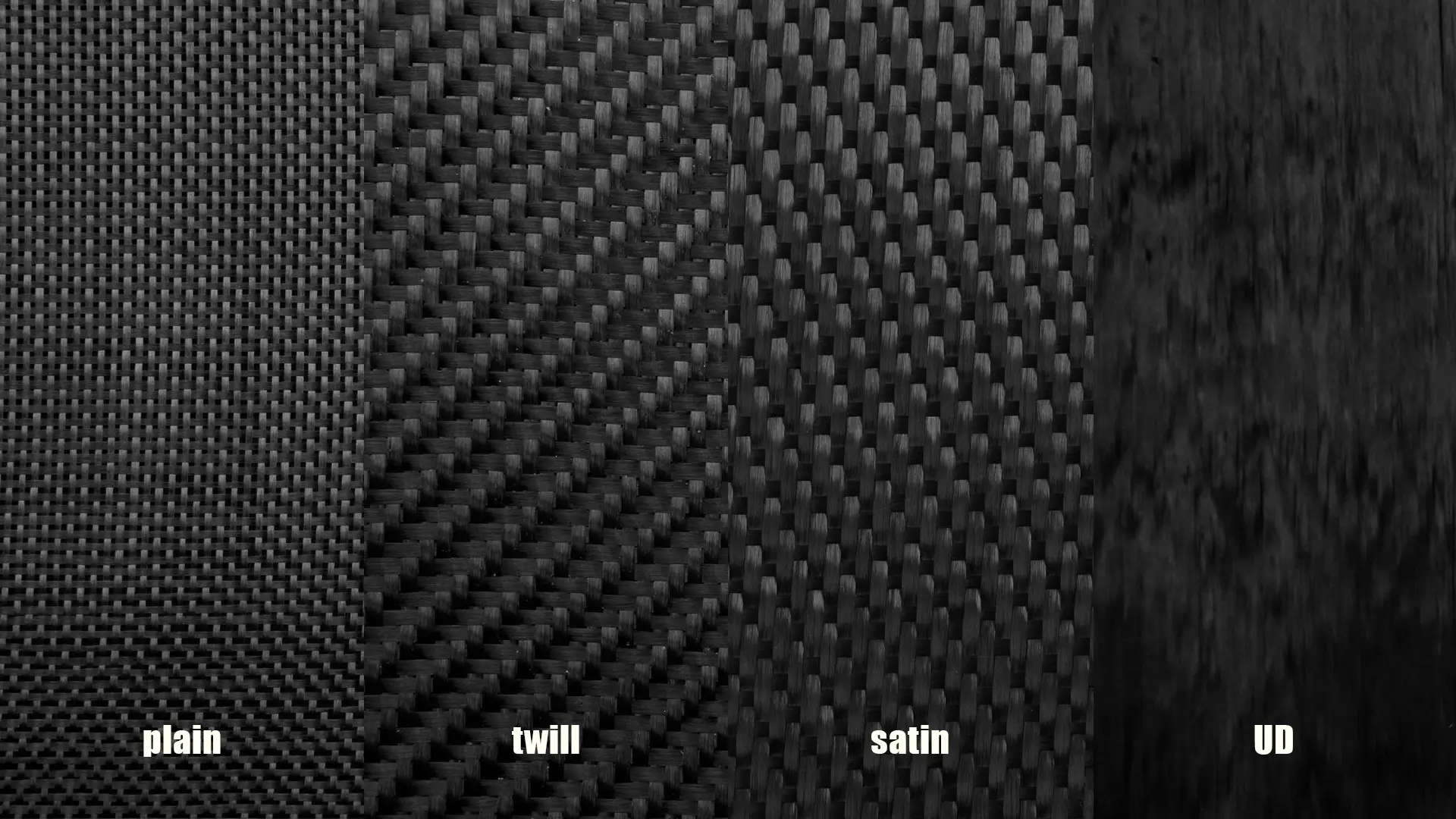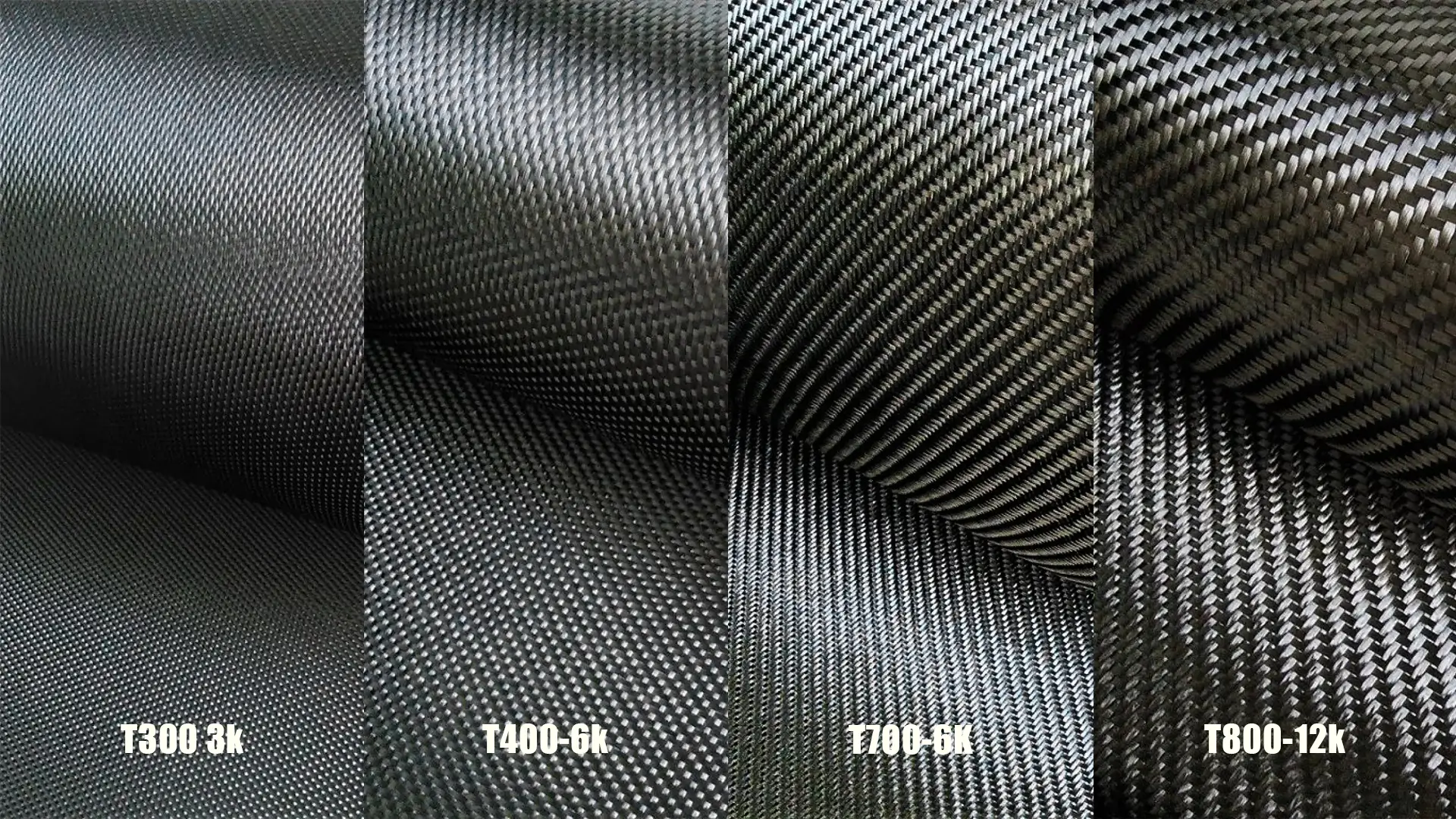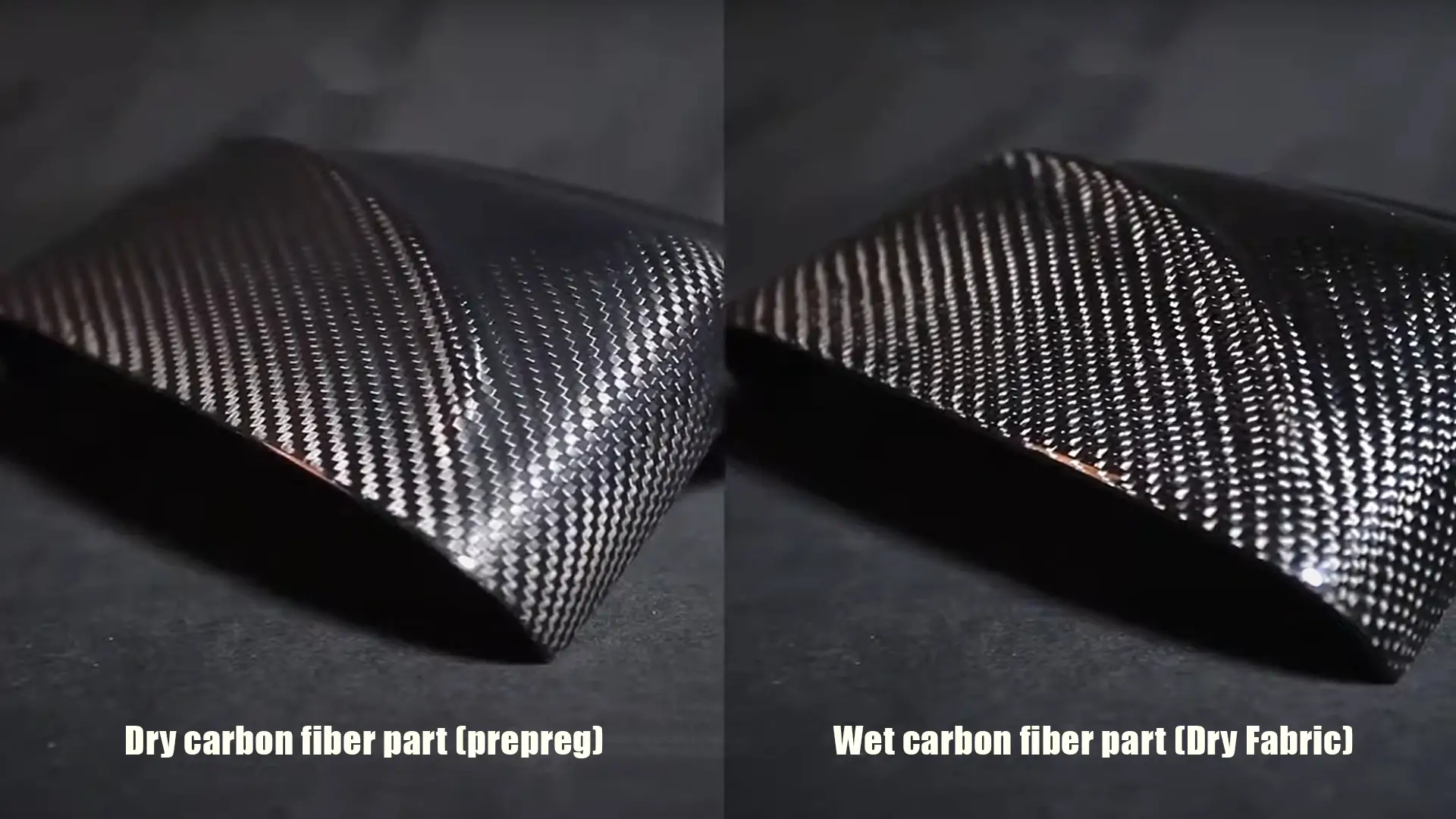Common Methods for Achieving Custom Carbon Fiber Parts Color
There are several industry-approved methods to apply or integrate color into carbon fiber parts, each offering different results based on your project needs.
1. Resin Tinting: The Foundation of Carbon Fiber parts Color
How it works:
Resin tinting involves adding pigments or dyes directly into the epoxy resin that binds the carbon fiber layers during the lamination process. As the resin impregnates the carbon fiber fabric, the color is absorbed and evenly distributed across the part. Since the pigment becomes a part of the cured resin, the result is a seamless and integrated color effect.
Advantages:
- Uniform and consistent color distribution
- No compromise on structural integrity
- Works with a wide range of colors including custom shades
- Highly durable as the color is embedded in the material
Disadvantages:
- Limited to translucent or semi-opaque tones
- Color intensity may vary based on fiber density and resin ratio
Best Applications:
- Automotive carbon fiber body panels
- Aerospace interior components
- Custom drones or robotics where weight and strength are critical
- Marine parts requiring both aesthetics and structural reliability
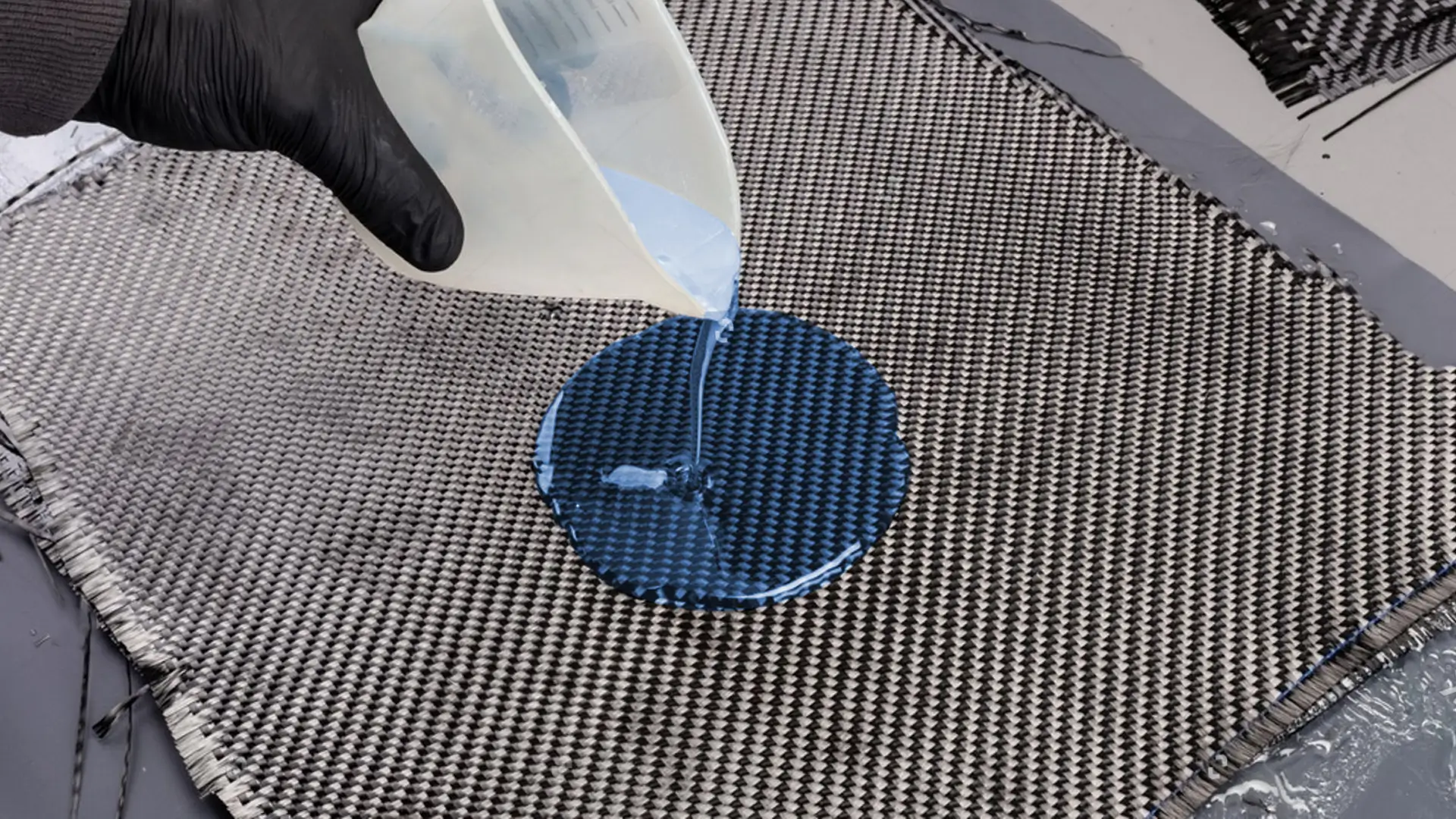
2. Surface Coating: Enhancing Carbon Fiber Parts Appearance and Durability
How it works:
Surface coating is a finishing process applied after the carbon fiber part is cured. This involves spraying or brushing a layer of clear coat, paint, or UV-protective coating onto the surface. It can be used to highlight the carbon fiber weave or completely alter the part’s visual appearance.
Advantages:
- Wide range of finishes: gloss, matte, satin, and metallic
- Adds visual depth and surface richness
- Protects from UV, moisture, and abrasions
- Easy to reapply or refinish over time
Disadvantages:
- May slightly increase the weight of the part
- Surface scratches or chips may affect the finish
Best Applications:
- Car hoods, spoilers, and diffusers
- Bicycle frames and helmets
- Electronic device casings
- Furniture and architectural elements
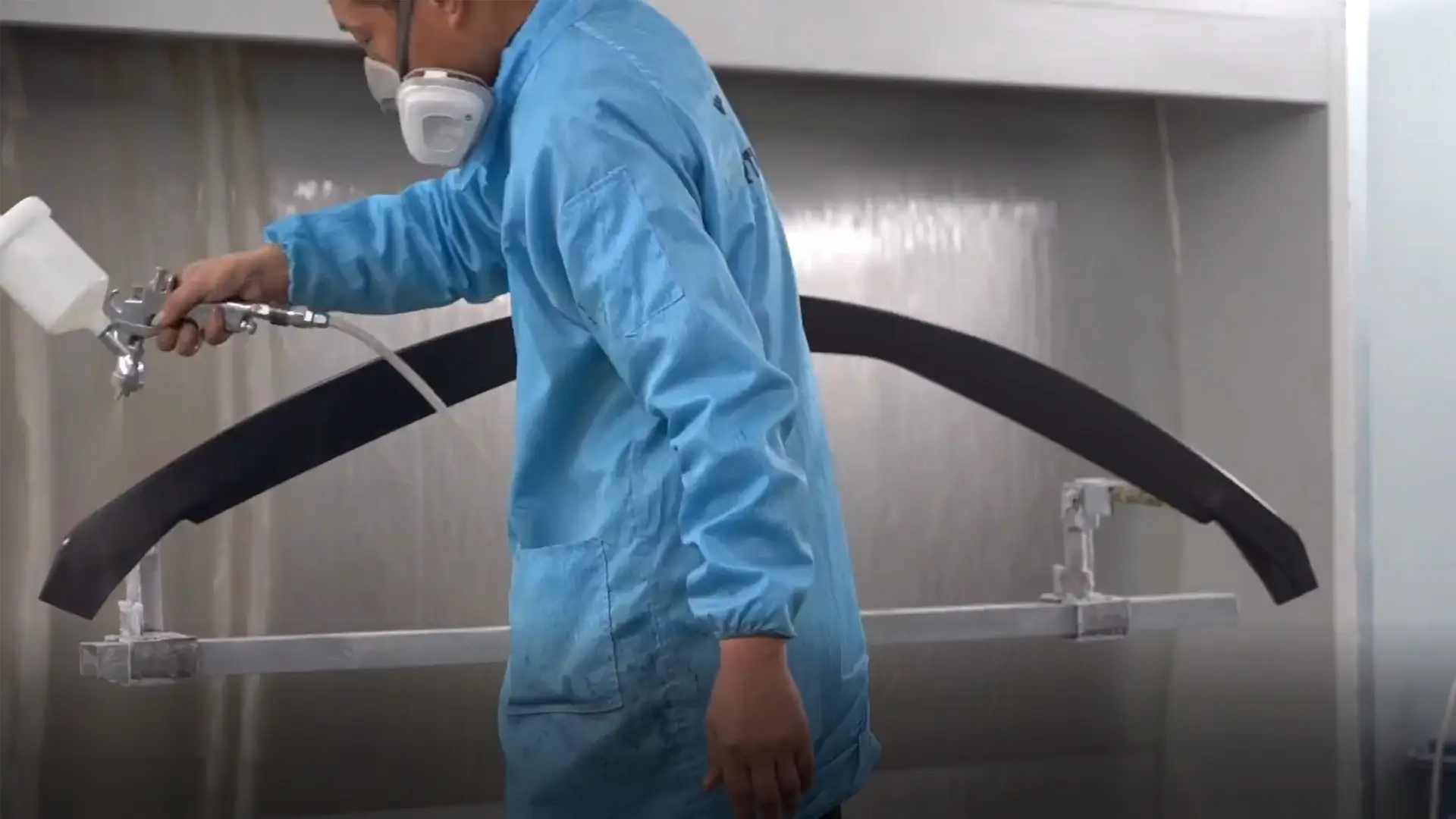
3. Hydrographic Printing: Patterned Carbon Fiber Parts Appearance
How it works:
Hydrographic printing (or water transfer printing) uses a film printed with patterns or images that is floated on water. The carbon fiber part is dipped into the water, and the film wraps around the part’s surface using water pressure. A clear coat is applied afterward to seal the pattern.
Advantages:
- Allows for highly detailed, multi-color designs
- Works well for complex and irregular shapes
- Can simulate exotic finishes like wood grain, camouflage, or custom graphics
- Does not interfere with part dimensions or performance
Disadvantages:
- Pattern alignment may be tricky on very large or complex parts
- Requires additional topcoat protection for durability
Best Applications:
- Consumer electronics (e.g., laptop shells, headphone casings)
- Luxury vehicle interiors and dashboard trims
- Sporting gear like snowboards, helmets, and golf clubs
- Industrial design products requiring unique visual identity

4. Colored Carbon Fiber Fabric: Visual Impact From the Core
How it works:
Colored carbon fiber fabric is made by blending dyed synthetic fibers (e.g., Kevlar, fiberglass) with traditional black carbon fibers during the weaving process. The color is thus integrated into the weave itself, offering stunning visual effects without the need for surface treatment.
Advantages:
- Unique colors and custom weave styles (e.g., checkerboard, honeycomb)
- No need for additional coatings or finishes
- Maintains mechanical performance in targeted directions
- Lightweight and clean aesthetic
Disadvantages:
- Generally more expensive due to material cost
- Limited availability in certain regions or colors
- Color contrast may fade slightly over long-term UV exposure
Best Applications:
- High-end watches, glasses frames, musical instruments
- Custom motorcycles, race cars, and luxury vehicle parts
- Artistic installations and architectural panels
- Premium consumer goods with high aesthetic value
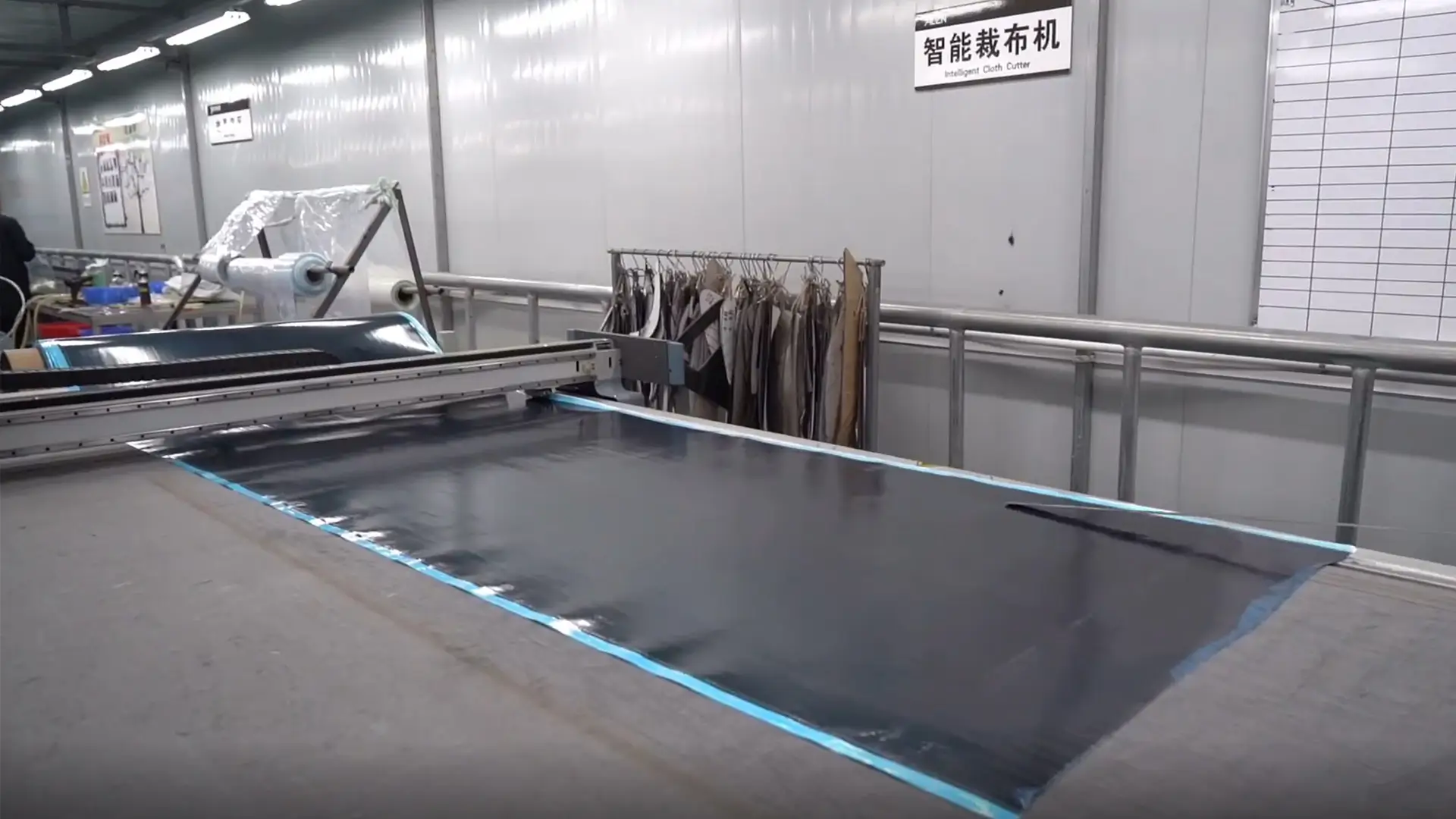
5. Direct Printing: Brand and Detail Customization
How it works:
Direct printing uses digital inkjet or UV printing technology to apply logos, serial numbers, or graphic designs directly onto the surface of the cured carbon fiber part. This technique allows for high-resolution printing and is often used in combination with a protective topcoat.
Advantages:
- Enables precision branding with fine detail
- Ideal for serial number tracking or product personalization
- Compatible with flat or gently curved surfaces
- Cost-effective for low to mid-volume runs
Disadvantages:
- Less suitable for highly curved or textured surfaces
- May require an additional protective layer to prevent fading or scratching
Best Applications:
Branded electronic components and accessories
Motorsports parts like fairings, panels, and covers
Aerospace identification panels
Custom sporting equipment and promotional products
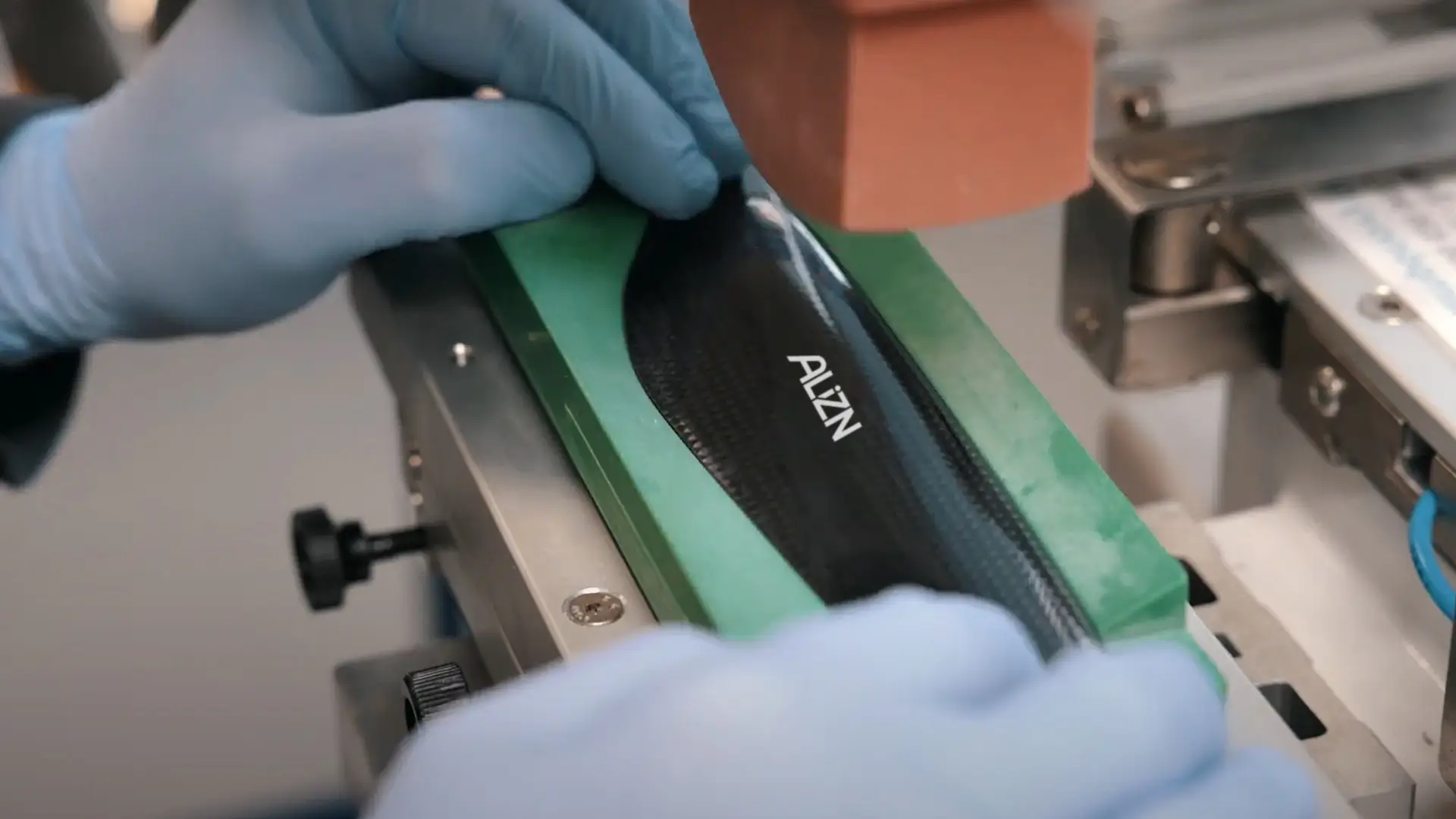
Comparison Table: Custom Carbon Fiber Parts Color and Appearance Options
| Customization Method | Description | Strength Impact | Visual Detail | Cost | Main Advantages | Best Applications |
|---|---|---|---|---|---|---|
| Resin Tinting | Color is mixed into resin before lamination | None | Subtle | Medium | Uniform color, no | Automotive parts, |
| Surface Coating | Painted or coated after part curing | Low | High | Medium | Wide color choices, surface protection | Electronic casings, exposed automotive panels |
| Hydrographic Printing | Uses water pressure to transfer film patterns to surface | None | Very High | Medium | Custom complex graphics, vivid designs | Motorcycle interiors, high-end consumer products |
| Colored Fiber Weave | Fabrics woven with colored or blended fibers | None | Very High | High | Natural texture, striking aesthetic | Luxury goods, bicycles, design-oriented components |
| Direct Printing | Direct inkjet or UV printing on cured part surfaces | None | Very High | Low–Medium | High-resolution logos, perfect for branding | Branded panels, limited edition items, aerospace identification |
Customizing Carbon Fiber Parts Appearance
Custom carbon fiber parts appearance includes more than just color. You can also choose between different weave patterns, surface textures, and gloss levels.
Common Weave Types That Affect Appearance:
- Plain Weave: Uniform and tight pattern, subtle and classic.
- Twill Weave: Diagonal pattern, more dynamic, reflects light attractively.
- Satin Weave: Smooth and shiny, less structural but very stylish.
- Forged Carbon: Marble-like random pattern, perfect for luxury branding.
Surface Finish Options:
- Glossy Finish: Reflective, deep appearance. Shows weave clearly.
- Matte Finish: Low-gloss, subtle and modern.
- Satin Finish: Balanced look between gloss and matte.
- Textured Finish: Adds tactile feel and visual complexity.
FAQ about Custom Carbon Fiber Parts Color
Q1: Can carbon fiber parts be made in colors other than black?
Yes, carbon fiber parts can be customized in various colors using techniques like resin tinting, surface coating, and colored fiber fabrics without compromising strength.
Q2: What is the most durable way to add color to carbon fiber parts?
Resin tinting is one of the most durable methods. It integrates the color directly into the composite structure during the manufacturing process.
Q3: Can I add my company logo to carbon fiber parts?
Absolutely. Techniques such as hydrographic printing and direct UV printing allow for precise logo placement and detailed graphic customization.
Q4: Will adding color or graphics affect the performance of carbon fiber parts?
When done correctly, color customization methods like resin tinting and hydro dipping do not significantly impact the mechanical properties or weight of the part.
Q5: What finish options are available for carbon fiber parts appearance?
Carbon fiber parts can be finished in gloss, matte, satin, or textured surfaces depending on your aesthetic goals and usage environment.
Q6: Which industries use custom carbon fiber parts with unique colors and designs?
Custom carbon fiber parts are widely used in automotive, motorsports, cycling, electronics, luxury goods, and branding applications.
Conclusion
Customizing carbon fiber parts color and carbon fiber parts appearance is no longer a luxury—it’s a key differentiator in modern design. Whether you want bold colors, refined finishes, or unique surface effects, the options available today make it possible to create carbon fiber components that are both high-performance and visually striking.
Final Thoughts
As composite material experts, we are willing to provide you with critical assistance. The correct judgment now avoids cost overruns, delays, and disappointing results later.
Need advice on your custom carbon fiber part? Reach out to our team for expert guidance.

